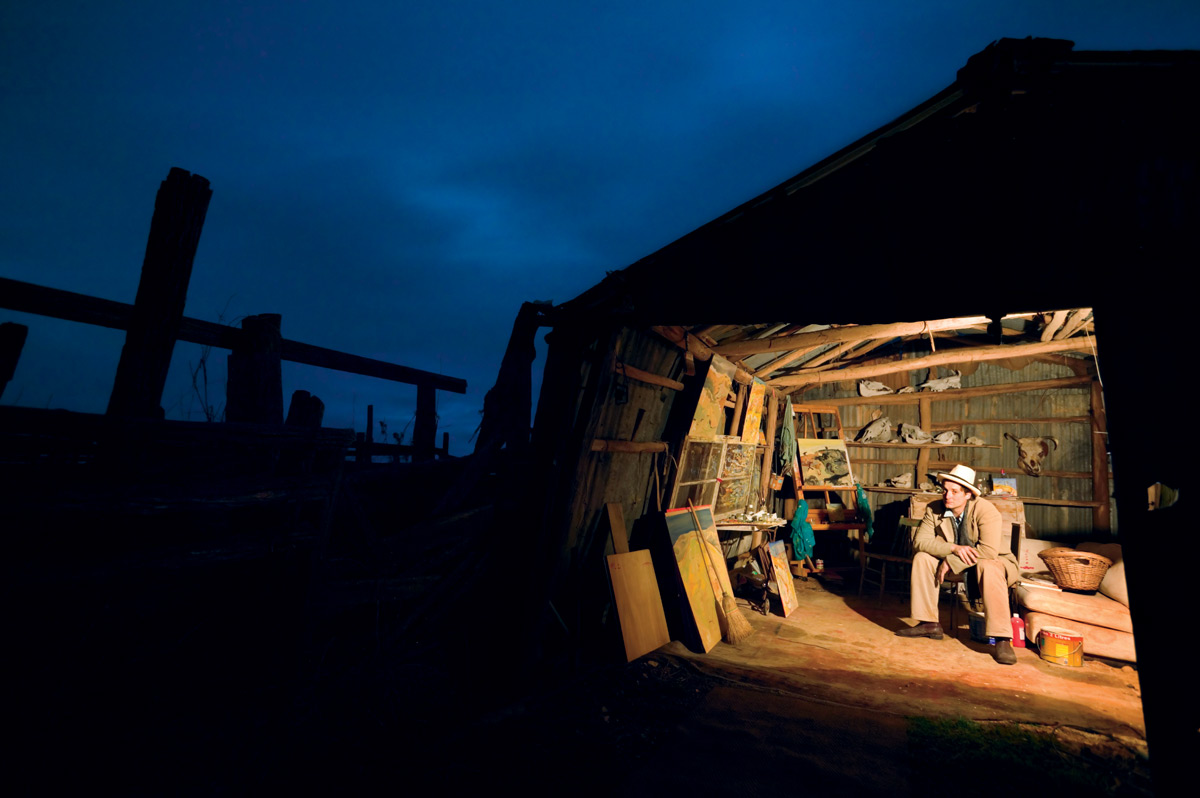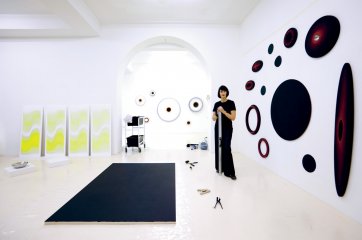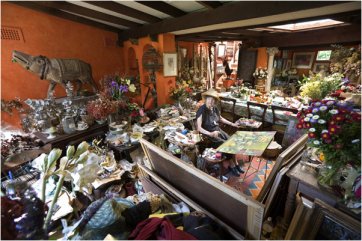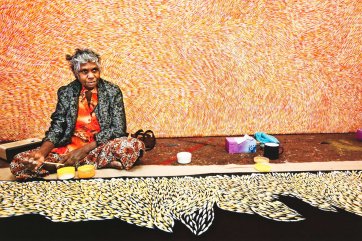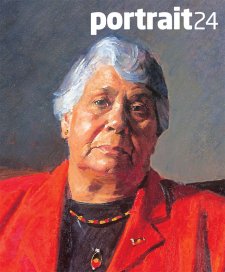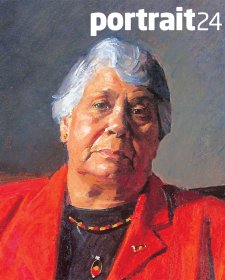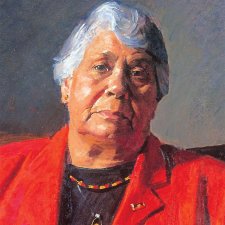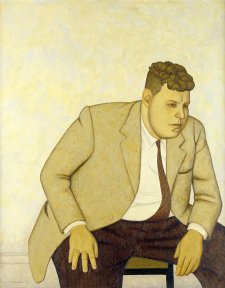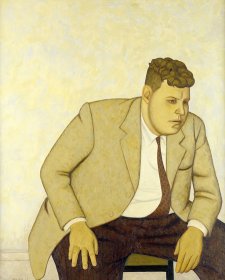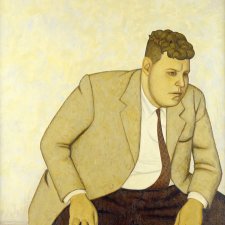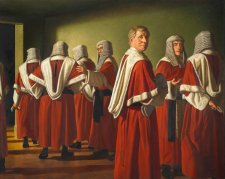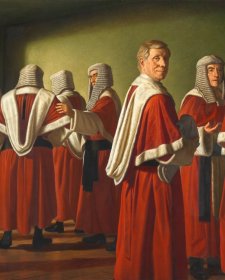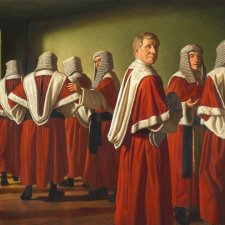The exhibition illustrates a broad cross-section of men and women from across Australia working in a variety of styles, from abstraction to the most exacting realism as well as traditional Aboriginal painters. R. Ian Lloyd, well known for his National Geographic work, examines through these large photographic portraits the individual artist’s working environment: whether it be an inner city loft, a kitchen table or the sandy earth of the Outback. The exhibition invites a questioning of each artist’s distinctiveness and how space affects and inspires individual creativity. The Studio project, initiated in 2002, also includes a 280 page hardbound book, Studio: Australian Painters on the Nature of Creativity with text by John McDonald, art critic for the Sydney Morning Herald.
Writing in the introduction to the book, McDonald reveals details about the project’s inception:
This project began life as a snapshot of Australian art at the beginning of the twenty-first century. It was not intended to be hierarchical, but a broad cross-section that looked at artists from many different parts of the country, artists of different styles and age groups. This meant we were obliged to limit the number of interviews in cities such as Sydney and Melbourne, and to choose between artists of roughly equivalent status and ability. This was not a simple process. Indeed, the book could have been ten times bigger and still not cover all those artists that had claims for inclusion. At an early stage, six curators of public galleries were consulted and made many recommendations. The surprising result was that their choices were utterly incompatible, with few artists appearing on more than two or three lists. Taking courage from this, in the final selection we paid more attention to location than reputation. As the photo-shoots and interviews multiplied, the rewards overcame any regrets.
We chose to concentrate on painting as a way of narrowing a voluminous field, and to assert the continuing vitality of the medium at a time when large international exhibitions are dominated by audiovisual art and installations. Despite the unstoppable rise of new media the commercial galleries and public museums are still preoccupied with painting, while the most memorable images in Australian art are by painters such as Tom Roberts and Arthur Streeton, Sidney Nolan and Russell Drysdale. If any art form may be said to capture the soul of the nation it must certainly be painting.
This need not, however, suggest any narrow nationalistic focus. During the 1980s curators produced a series of overseas touring shows of “contemporary Australian art”, as if there were something unique to this country in the work being showcased. Too frequently the opposite applied. The selections revealed little more than a desire to jump on international bandwagons. There were significant figures inserted among the fashionable clones, but many of Australia’s most original and talented artists were never included. It is a matter of some relief today that an increasingly globalised art world is less interested in ‘national’ shows than in the work of individuals who just happen to have been born in Australia.
At the same time it has become much harder to indulge in sweeping generalisations about Australian art. The field has become more diverse than ever before due to the rise of Aboriginal art, which now dominates the local and international market, and to changing patterns of immigration and multicultural influence. The painters in this book come from countries as far afield as Laos and Latvia, China and Romania, but they have all made a distinctive contribution to the art of their adopted homeland.
As we pursued our peripatetic travels, visiting more artists and studios, the nature of the project began to change. Instead of an overview of contemporary Australian painting it seemed that we were conducting an enquiry into the nature of the creative process, looking at the many different ways artists strive to translate a mental image into a finished work – to make visible that which is invisible, but no less powerfully present.
